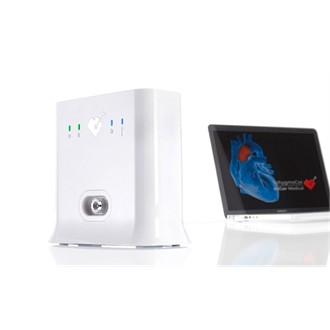These days, when we talk about smart medical technology, wearables dominate the conversation. While wearables have changed our relationship to fitness and home health monitoring, smart medical equipment is advancing healthcare at the point of care. These advances allow physicians and clinicians to do more than simply monitor and collect patient data—they’re enabling faster, more precise care delivery. With quicker and more accurate methods to measure and record data, physicians and clinicians have access to a set of data that is more actionable and meaningful than ever before.
Many believe that smart medical equipment is a technology for the future, not realizing that they’re already being introduced into the market. We’ve compiled a list of large and small companies that are developing innovative, smart device technology into healthcare.
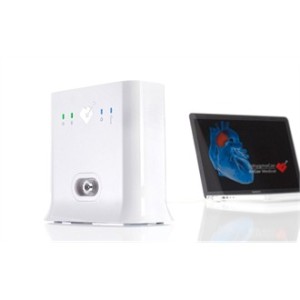 SphygmoCor XCEL measures central aortic blood pressure in 60 seconds. With the press of one button, a brachial pressure cuff can read diastolic pressure and record the patient’s brachial wave form. The device does more than just collect patients’ vitals, it rather analyzes them to provide a holistic interpretation of the patients’ health profile. Then, it examines this data against the normal range for the patient’s height, weight, age and gender, and alerts the provider if the patient’s vitals are outside these parameters. This allows physicians to make better-informed clinical decisions and responds to patients’ health changes in real-time.
SphygmoCor XCEL measures central aortic blood pressure in 60 seconds. With the press of one button, a brachial pressure cuff can read diastolic pressure and record the patient’s brachial wave form. The device does more than just collect patients’ vitals, it rather analyzes them to provide a holistic interpretation of the patients’ health profile. Then, it examines this data against the normal range for the patient’s height, weight, age and gender, and alerts the provider if the patient’s vitals are outside these parameters. This allows physicians to make better-informed clinical decisions and responds to patients’ health changes in real-time.
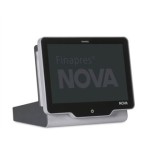 Finapres® NOVA is a similar non-invasive continuous blood pressure monitor, with an unobtrusive double-finger cuff system that can be used to monitor patients 24/7. This device allows for third party integration with other modules and software applications. By expanding the utility of the device, physicians and clinicians can collect a wide range of vital signs, such as heart rate, CRT, hemodynamics or respiration rates, making it more than just a single-use tool.
Finapres® NOVA is a similar non-invasive continuous blood pressure monitor, with an unobtrusive double-finger cuff system that can be used to monitor patients 24/7. This device allows for third party integration with other modules and software applications. By expanding the utility of the device, physicians and clinicians can collect a wide range of vital signs, such as heart rate, CRT, hemodynamics or respiration rates, making it more than just a single-use tool.
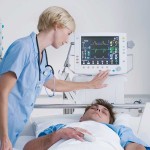 Bedcomm is a bedside device that stores key vital signs. It captures data from a range of medical equipment including physiological monitors, ventilators, cardiac output monitors, intraortic balloon pumps, and anesthesia machines, among others. The data once silo-ed within each of these devices is collected on a single web platform, and automatically entered into patients’ EMRs. With this technology, clinicians have a more complete set of data on patients, which they can respond to in a more timely manner.
Bedcomm is a bedside device that stores key vital signs. It captures data from a range of medical equipment including physiological monitors, ventilators, cardiac output monitors, intraortic balloon pumps, and anesthesia machines, among others. The data once silo-ed within each of these devices is collected on a single web platform, and automatically entered into patients’ EMRs. With this technology, clinicians have a more complete set of data on patients, which they can respond to in a more timely manner.
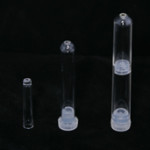 Smart Medical Technologies’ Smart Test Tube utilizes embedded radio frequency identification to store and identify information. This information can replace the paperwork typically used in laboratories when collecting specimens, reducing the likelihood of medical and transcription errors. This smart test tube’s data is stored in an encrypted memory chip and can be securely transferred to a USB or electronic clipboard.
Smart Medical Technologies’ Smart Test Tube utilizes embedded radio frequency identification to store and identify information. This information can replace the paperwork typically used in laboratories when collecting specimens, reducing the likelihood of medical and transcription errors. This smart test tube’s data is stored in an encrypted memory chip and can be securely transferred to a USB or electronic clipboard.
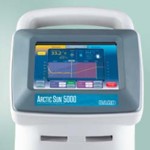 The Artic Sun 5000 Temperature Management System is one of many diverse offerings from Bard Medical. This particular device monitors and controls a patient’s temperature with electronic modules and disposable gel pads. The information is communicated to a stand-alone electronic module with an interactive touchscreen. The data is more precise than methods of measuring used in the past, and offers a fast assessment to alert providers of changes in patient’s temperature. The device is easily customizable and can initiate rewarming automatically. Bard Medical also has a serial port adapter that connects equipment data to EMRs and other IT systems.
The Artic Sun 5000 Temperature Management System is one of many diverse offerings from Bard Medical. This particular device monitors and controls a patient’s temperature with electronic modules and disposable gel pads. The information is communicated to a stand-alone electronic module with an interactive touchscreen. The data is more precise than methods of measuring used in the past, and offers a fast assessment to alert providers of changes in patient’s temperature. The device is easily customizable and can initiate rewarming automatically. Bard Medical also has a serial port adapter that connects equipment data to EMRs and other IT systems.
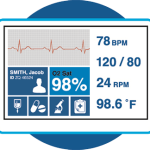 Capsule’s SmartLinx MDIS, recently purchased by Qualcomm, ties together all the smart medical devices in a given hospital into a unified data management system. While not an actual medical device, SmartLinx operates as a systemic backbone for these devices. Its system supports 18 distinct medical device categories, collecting relevant data and communicating it to a dynamic library of interfaces that read and translate protocols. With access to such big data, healthcare professionals and researchers will be able to make more informed population health management decisions and better predict large-scale healthcare changes.
Capsule’s SmartLinx MDIS, recently purchased by Qualcomm, ties together all the smart medical devices in a given hospital into a unified data management system. While not an actual medical device, SmartLinx operates as a systemic backbone for these devices. Its system supports 18 distinct medical device categories, collecting relevant data and communicating it to a dynamic library of interfaces that read and translate protocols. With access to such big data, healthcare professionals and researchers will be able to make more informed population health management decisions and better predict large-scale healthcare changes.
—
Smart medical equipment allow physicians and clinicians to make collaborative care decisions with greater accuracy and precision than ever before. The real-time alerts, notifications and data visualizations of these smart solutions enable physicians and clinicians to more quickly respond to emergency situations where each second counts. By connecting medical devices to the internet, data once silo-ed in medical machinery is being made more accessible and actionable. The impact these technologies will have on patient health outcomes, and physicians and hospitals transitioning to value-based healthcare and population health management will be significant.

